- Home
- Peter Ackroyd
London Page 3
London Read online
Page 3
The mammoth of 1690 was only the first primeval relic to be discovered in the London region. Hippopotami and elephants lay beneath Trafalgar Square, lions at Charing Cross, and buffaloes beside St. Martin-in-the-Fields. A brown bear was discovered in north Woolwich, mackerel in the old brickfields of Holloway and sharks in Brentford. The wild animals of London include reindeer, giant beavers, hyenas and rhinoceri which once grazed by the swamps and lagoons of the Thames. And that landscape has not entirely faded. Within recent memory the mist from the ancient marshes of Westminster destroyed the frescoes of St. Stephen’s. It is still possible, beside the National Gallery, to detect the rise of ground between the middle and upper terraces of the Thames in the Pleistocene era.
This was not, even then, an unpeopled region. Within the bones of the King’s Cross mammoth were also found pieces of a flint hand-axe which can be dated to the Palaeolithic period. We can say with some certainty that for half a million years there has been in London a pattern of habitation and hunting if not of settlement. The first great fire of London was started, a quarter of a million years ago, in the forests south of the Thames. That river had by then taken its appointed course but not its later appearance; it was very broad, fed by many streams, occluded by forests, bordered by swamps and marshes.
The prehistory of London invites endless speculation and there is a certain pleasure to be derived from the prospect of human settlement in areas where, many thousands of years later, streets would be laid out and houses erected. There is no doubt that the region has been continually occupied for at least fifteen thousand years. A great gathering of flint tools, excavated in Southwark, is assumed to mark the remains of a Mesolithic manufactory; a hunting camp of the same period has been discovered upon Hampstead Heath; a pottery bowl from the Neolithic period was unearthed in Clapham. On these ancient sites have been found pits and post-holes, together with human remains and evidence of feasting. These early people drank a potion similar to mead or beer. Like their London descendants, they left vast quantities of rubbish everywhere. Like them, too, they met for the purposes of worship. For many thousands of years these ancient peoples treated the great river as a divine being to be placated and surrendered to its depths the bodies of their illustrious dead.
In the late Neolithic period there appeared, from the generally marshy soil on the northern bank of the Thames, twin hills covered by gravel and brick-earth, surrounded by sedge and willow. They were forty to fifty feet in height, and were divided by a valley through which flowed a stream. We know them as Cornhill and Ludgate Hill, with the now buried Walbrook running between. Thus emerged London.
The name is assumed to be of Celtic origin, awkward for those who believe that there was no human settlement here before the Romans built their city. Its actual meaning, however, is disputed. It might be derived from Llyndon, the town or stronghold (don) by the lake or stream (Llyn); but this owes more to medieval Welsh than ancient Celtic. Its provenance might be Laindon, “long hill,” or the Gaelic lunnd, “marsh.” One of the more intriguing speculations, given the reputation for violence which Londoners were later to acquire, is that the name is derived from the Celtic adjective londos meaning “fierce.”
There is a more speculative etymology which gives the honour of naming to King Lud, who is supposed to have reigned in the century of the Roman invasion. He laid out the city’s streets and rebuilt its walls. Upon his death he was buried beside the gate which bore his name, and the city became known as Kaerlud or Kaerlundein, “Lud’s City.” Those of sceptical cast of mind may be inclined to dismiss such narratives but the legends of a thousand years may contain profound and particular truths.
The origin of the name, however, remains mysterious. (It is curious, perhaps, that the name of the mineral most associated with the city—coal—also has no certain derivation.) With its syllabic power, so much suggesting force or thunder, it has continually echoed through history—Caer Ludd, Lundunes, Lindonion, Lundene, Lundone, Ludenberk, Longidinium, and a score of other variants. There have even been suggestions that the name is more ancient than the Celts themselves, and that it springs from some Neolithic past.
We must not necessarily assume that there were settlements or defended enclosures upon Ludgate Hill or Cornhill, or that there were wooden trackways where there are now great avenues, but the attractions of the site might have been as obvious in the third and fourth millennia BC as they were to the later Celts and Romans. The hills were well defended, forming a natural plateau, with the river to the south, fens to the north, marshes to the east, and another river, later known as the Fleet, to the west. It was fertile ground, well watered by springs bubbling up through the gravel. The Thames was easily navigable at this point, with the Fleet and the Walbrook providing natural harbours. The ancients trackways of England were also close at hand. So from earliest time London was the most appropriate site for trade, for markets, and for barter. The City has for much of its history been the centre of world commerce; it is perhaps instructive to note that it may have begun with the transactions of Stone Age people in their own markets.
All this is speculation, not altogether uninformed, but evidence of a more substantial kind has been discovered in later levels of London earth. In those long stretches of time designated as the “Late Bronze Age” and the “Early Iron Age”—a period spanning almost a thousand years—shards and fragments of bowls, and pots, and tools, were left all over London. There are signs of prehistoric activity in the areas now known as St. Mary Axe and Gresham Street, Austin Friars and Finsbury Circus, Bishopsgate and Seething Lane, with altogether some 250 “finds” clustered in the area of the twin hills together with Tower Hill and Southwark. From the Thames itself many hundreds of metal objects have been retrieved, while along its banks is to be found frequent evidence of metal-working. This is the period from which the great early legends of London spring. It is also, in its latter phase, the age of the Celts.
In the first century BC, Julius Caesar’s description of the region around London suggests the presence of an elaborate, rich and well-organised tribal civilisation. Its population was “exceedingly large” and “the ground thickly studded with homesteads.” The nature and role of the twin hills throughout this period cannot with certainty be given; perhaps these were sacred places, or perhaps their well-defined position allowed them to be used as hill-forts in order to protect the trade carried along the river. There is every reason to suppose that this area of the Thames was a centre of commerce and of industry, with a market in iron products as well as elaborate workings in bronze, with merchants from Gaul, Rome and Spain bringing Samian ware, wine and spices in exchange for corn, metals and slaves.
In the history of this period completed by Geoffrey of Monmouth in 1136, the principal city in the island of Britain is undoubtedly London. But according to modern scholars his work is established upon lost texts, apocryphal embellishments and uninformed conjecture. Where Geoffrey speaks of kings, for example, they prefer the nomenclature of tribes; he dates events by means of biblical parallel, while they provide indicators such as “Late Iron Age”; he elucidates patterns of conflict and social change in terms of individual human passion, where more recent accounts of prehistory rely upon more abstract principles of trade and technology. The approaches may be contradictory but they are not necessarily incompatible. It is believed by historians of early Britain, for example, that a people known as the Trinovantes settled on territory to the north of the London region. Curiously enough, Geoffrey states that the first name of the city was Trinovantum. He also mentions the presence of temples within London itself; even if they had existed, these palisades and wooden enclosures would since have been lost beneath the stone of the Roman city as well as the brick and cement of succeeding generations.
But nothing is wholly lost. In the first four decades of the twentieth century there was a particular effort by prehistorians to discover something of London’s supposedly hidden past. In books such as The Lost Language of London,
Legendary London, Prehistoric London and The Earlier Inhabitants of London, tokens and traces of a Celtic or Druidic London were thoroughly examined and were found significant. These studies were effectively killed off by the Second World War, after which urban planning and regeneration became more important than urban speculation. But the original works survive, and still repay close study. The fact that existing street names may betray a Celtic origin—Colin Deep Lane, Pancras Lane, Maiden Lane, Ingal Road among them—is, for example, as instructive as any of the material “finds” recorded on the site of the ancient city. Long-forgotten trackways have guided the course of modern thoroughfares; the crossroads at the Angel, Islington, for example, marks the point where two prehistoric British roads intersected. We know of Old Street leading to Old Ford, of Maiden Lane crossing through Pentonville and Battle Bridge to Highgate, of the route from Upper Street to Highbury, all following the same ancient tracks and buried paths.
Yet there is no more suspect or difficult subject, in the context of this period, than Druidism. That it was well established in Celtic settlements is not in doubt; Julius Caesar, who was in a position to speak with some authority on the subject, stated that the Druid religion was founded (inventa) in Britain and that its Celtic adherents came to this island in order to be educated in its mysteries. It represented a highly advanced, if somewhat insular, religious culture. Of course we might speculate that the oak woodland to the north of the twin hills provided a suitable site for sacrifice and worship; one antiquary, Sir Laurence Gomme, has envisaged a temple or sacred space upon Ludgate Hill itself. But there are many false trails. It was once generally agreed that Parliament Hill near Highgate was a place for religious assembly, but in fact the remnants which have been discovered there do not date from prehistory. The Chislehurst caves in south London, once reputed to be of Druid origin connected in some fashion with the observation of the heavens, are almost certainly of medieval construction.
It has been suggested that the London area was controlled from three sacred mounds; they are named as Penton Hill, Tothill and the White Mound, otherwise known as Tower Hill. Any such theory can readily be dismissed as nonsense, but there are curious parallels and coincidences which render it more interesting than the usual fantasies of latter-day psychogeographers.
It is known that in prehistoric worship a holy place was marked by a spring, a grove and a well or ritual shaft.
There is a reference to a “shrubby maze” in the pleasure gardens of White Conduit House, situated on the high ground of Pentonville, and a maze’s avatar was a sacred hill or grove. Close at hand is the famous well of Sadlers Wells. In recent days the water of this well flowed under the orchestra pit of the theatre but, from medieval times, it was considered holy and was tended by the priests of Clerkenwell. The site of the high ground in Pentonville was also once a reservoir; it was until recently the headquarters of the London Water Board.
Another maze was to be found in the area once known as Tothill Fields in Westminster; it is depicted in Hollar’s view of the area in the mid-seventeenth century. Here also is a sacred spring, deriving from the “holy well” in Dean’s Yard, Westminster. A fair, similar to the pleasure gardens upon White Conduit Fields, was established here at an early date; the first extant reference is dated 1257.
The sites are, therefore, comparable. There are other suggestive coincidences. On old maps, “St. Hermit’s Hill” is a noticeable feature of the area beside Tothill Fields. To this day, there is a Hermes Street at the top of the Pentonville Road. It is perhaps also interesting that in a house on this site dwelled a physician who promoted a medicine known as the “Balsam of Life”; the house was later turned into an observatory.
On Tower Hill there was a spring of clear bubbling water, reputed to possess curative properties. A medieval well exists there, and traces of a Late Iron Age burial have been uncovered. There is no maze but the place has its own share of Celtic legends; according to the Welsh Triads the guardian head of Bran the Blessed is interred within the White Hill to safeguard the kingdom from its enemies. London’s legendary founder Brutus, also, was supposed to have been buried on Tower Hill, in sacred ground that was used as an observatory until the seventeenth century.
The etymology of Penton Hill and Tothill is reasonably certain. Pen is the Celtic signifier for head or hill, while ton is a variant of tor/tot/ twt/too, which means spring or rising ground. (Wycliffe applies the words tot or tote, for example, to Mount Zion.) Those of a more romantic disposition have suggested that tot is derived from the Egyptian god Thoth who is of course reincarnated in Hermes, the Greek personification of the wind or the music of the lyre.
Here, then, is the hypothesis: London mounds, which bear so many similar characteristics, are in fact the holy sites of Druid ritual. The maze is the sacred equivalent of the oak grove, while the wells and springs represent the worship of the god of the water. The London Water Board was, then, well situated. Pleasure gardens and fairs are more recent versions of those prehistoric festivals or meetings which were held upon the same ground. So antiquaries have named Tothill, Penton and Tower Hill as the holy places of London.
It is generally assumed, of course, that Pentonville is named after an eighteenth-century speculator, Henry Penton, who developed the area. Can one place assume different identities, existing in different times and in different visions of reality? Is it possible that both explanations of Pentonville are true simultaneously? Might Billingsgate be named after the Celtic king Belinus or Belin, as the great sixteenth-century antiquary John Stow would have it, or after a Mr. Beling, who once owned the land? Can Ludgate really bear the name of Lud, a Celtic god of the waters? Certainly there is room for contemplation here.
It is equally important to look for evidence of continuity. It is likely that there was antiquity of worship among the Britons long before the Druids emerged as the high priests of their culture, and in turn Celtic forms of ritual seem to have survived the Roman occupation and subsequent invasions by the Saxon tribes. In the records of St. Paul’s Cathedral the adjacent buildings are known as “Camera Dianae.” A fifteenth-century chronicler recalled a time when “London worships Diana,” the goddess of the hunt, which is at least one explanation for the strange annual ceremony that took place at St. Paul’s as late as the sixteenth century. There, in the Christian temple erected on the sacred site of Ludgate Hill, a stag’s head was impaled upon a spear and carried about the church; it was then received upon the steps of the church by priests wearing garlands of flowers upon their heads. So the pagan customs of London survived into recorded history, just as a latent paganism survived among the citizens themselves.
One other inheritance from prehistoric worship may also be considered. The sense of certain places as being powerful or venerable was taken over by the Christians in the recognition of “holy wells” and in such ceremonies of territorial piety as “beating the bounds.” Yet the same sensibility is to be found in the writings of the great London visionaries, from William Blake to Arthur Machen, writings in which the city itself is considered to be a sacred place with its own joyful and sorrowful mysteries.
In this Celtic period, which lurks like some chimera in the shadows of the known world, the great legends of London find their origin. The historical record knows only of warring tribes within a highly organised culture of some sophistication. They were not necessarily savage, in other words, and the Greek geographer Strabo describes one Briton, an ambassador, as well dressed, intelligent and agreeable. He spoke Greek with such fluency that “you would have thought he had been bred up in the lyceum.” This is the proper context for those narratives in which London is accorded the status of a principal city. Brutus, in legend the founder of the city, was buried within London’s walls. Locrinus kept his lover, Estrildis, in a secret chamber beneath the ground. Bladud, who practised sorcery, constructed a pair of wings with which to fly through the air of London; yet he fell against the roof of the Temple of Apollo situated in the very heart of the city,
perhaps on Ludgate Hill itself. Another king, Dunvallo, who formulated the ancient laws of sanctuary, was buried beside a London temple. From this period, too, came the narratives of Lear and of Cymbeline. More powerful still is the legend of the giant Gremagot who by some strange alchemy was transformed into the twins Gog and Magog, who became tutelary spirits of London. It has often been suggested that each of this characteristically ferocious pair, whose statues have stood for many centuries within the Guildhall, guards one of the twin hills of London.
Such stories are recorded by John Milton in The History of Britain, published a little more than three hundred years ago. “After this, Brutus in a chosen place builds Troia nova, chang’d in time to Trinovantum, now London: and began to enact Laws; Heli beeing then high Priest in Judaea: and having govern’d the whole Ile 24 Years, dy’d, and was buried in his new Troy.” Brutus was the great-grandson of Aeneas who, some years after the fall of Troy, led the exodus of Trojans from Greece; in the course of his exilic wanderings he was granted a dream in which the goddess Diana spoke words of prophecy to him: an island far to the west, beyond the realm of Gaul, “fitts thy people”; you are to sail there, Brutus, and establish a city which will become another Troy. “And Kings be born of thee, whose dredded might shall aw the World, and Conquer Nations bold.” London is to maintain a world empire but, like ancient Troy, it may suffer some perilous burning. It is interesting that paintings of London’s Great Fire in 1666 make specific allusion to the fall of Troy. This is indeed the central myth of London’s origin which can be found in the sixth-century verses of “Tallisen,” where the British are celebrated as the living remnant of Troy, as well as in the later poetry of Edmund Spenser and of Alexander Pope. Pope, born in Plough Court beside Lombard Street, was of course invoking a visionary urban civilisation; yet it is one highly appropriate for a city first vouchsafed to Brutus in a dream.

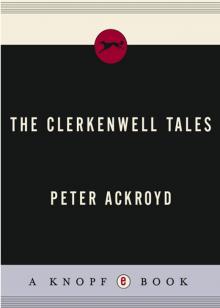 The Clerkenwell Tales
The Clerkenwell Tales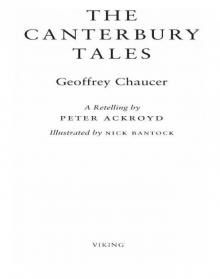 The Canterbury Tales
The Canterbury Tales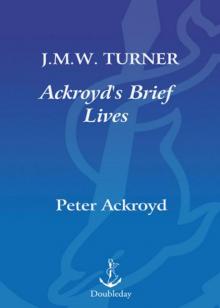 J. M. W. Turner
J. M. W. Turner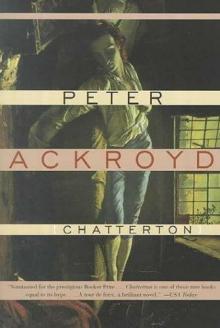 Chatterton
Chatterton The Canterbury Tales – A Retelling
The Canterbury Tales – A Retelling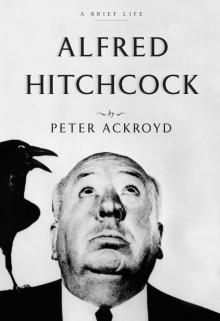 Alfred Hitchcock
Alfred Hitchcock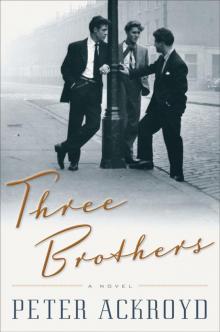 Three Brothers
Three Brothers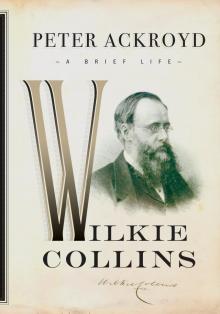 Wilkie Collins
Wilkie Collins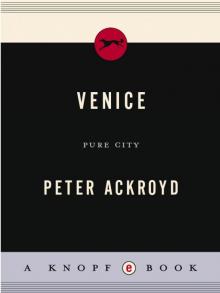 Venice
Venice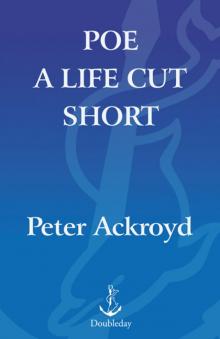 Poe
Poe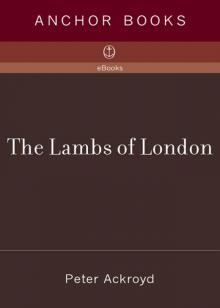 The Lambs of London
The Lambs of London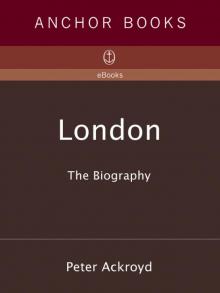 London
London Queer City
Queer City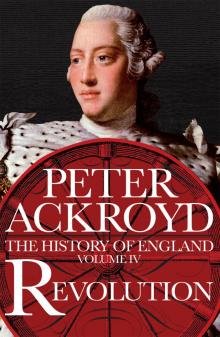 Revolution, a History of England, Volume 4
Revolution, a History of England, Volume 4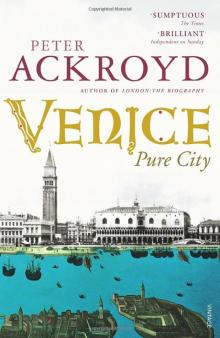 Venice: Pure City
Venice: Pure City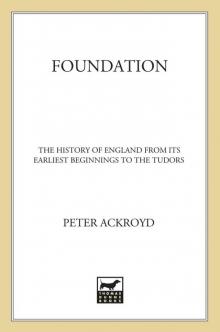 Foundation
Foundation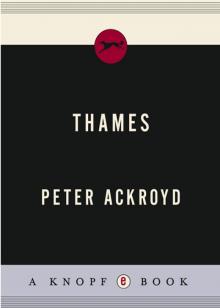 Thames
Thames The Plato Papers
The Plato Papers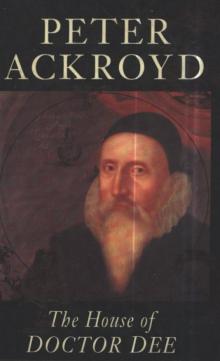 The house of Doctor Dee
The house of Doctor Dee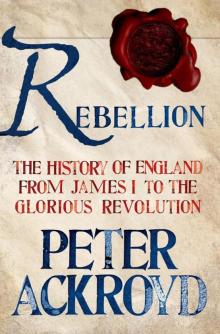 Rebellion: The History of England from James I to the Glorious Revolution
Rebellion: The History of England from James I to the Glorious Revolution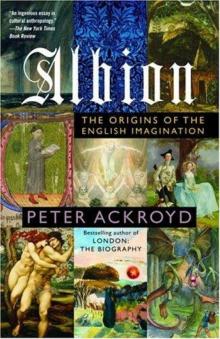 Albion: The Origins of the English Imagination
Albion: The Origins of the English Imagination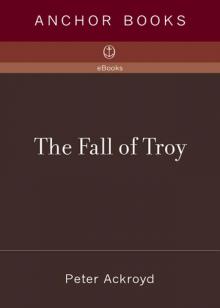 The Fall of Troy
The Fall of Troy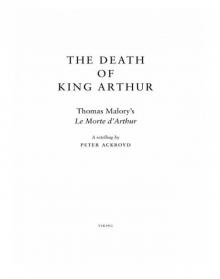 The Death of King Arthur
The Death of King Arthur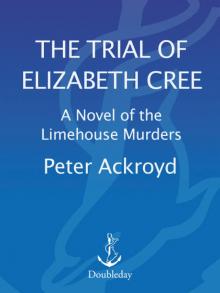 The Trial of Elizabeth Cree
The Trial of Elizabeth Cree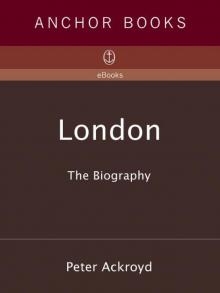 London: The Biography
London: The Biography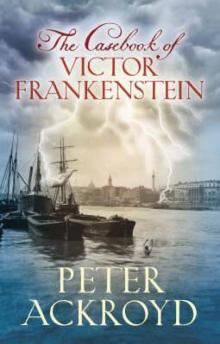 The Casebook of Victor Frankenstein
The Casebook of Victor Frankenstein Hawksmoor
Hawksmoor Charlie Chaplin
Charlie Chaplin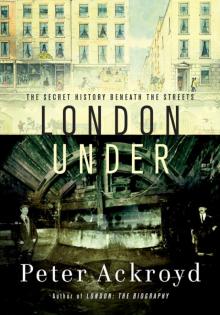 London Under
London Under